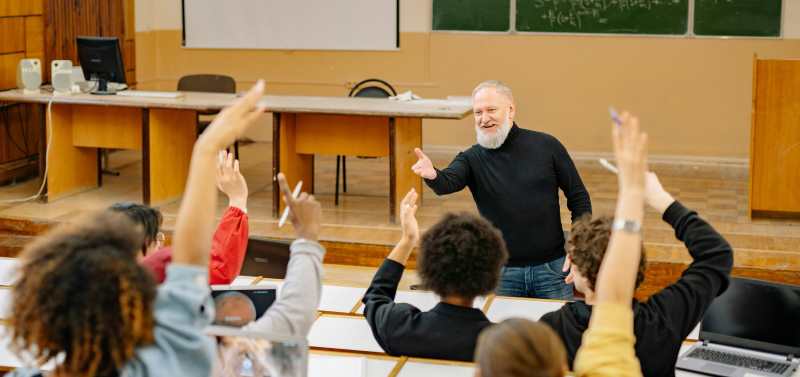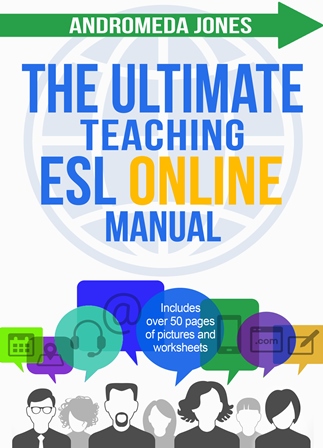A B1 Intermediate TEFL lesson plan for a class of 6-10 adult students. Grammar exercise from The Ultimate ESL Teaching Manual. Vocabulary topic from The Ultimate ESL Vocabulary Manual.
Class duration: 90 minutes
Learning objectives: Grammar: past simple vs. present perfect; vocabulary: likes and dislikes (uncommon forms)
Resources for class: 20-30 slips of scrap paper, small object and bag.
Example TEFL Lesson Plan: present perfect + likes and dislikes vocabulary
| 10.00 | Warmer: Write “Ways to express likes and dislikes” on the board and as students join the class ask them to brainstorm vocabulary in pairs. |
| 10.05 | Vocabulary: With class, create a spider chart of different expressions for likes and dislikes. Include: to be keen on + gerund / to be keen + infinitive; to be into, to get into; can’t stand + gerund and ‘to root for’ + someone / something. |
| 10.15 | Hand out slips of paper and ask students to write a few favourite phrases from vocabulary topic. Set aside for later. |
| 10.20 | Grammar: Write “Present perfect” ‘Have’ + participle on the board and example sentence. Ask students if they have seen this form before. Elicit that have + participle expresses something that has happened in the past, but in a continuing time such as: today, this week, this year, this month. Elicit examples from students. From these examples, elicit the interrogative and negative. |
| 10.30 | Past simple vs. present perfect activity. Say a time marker such as ‘yesterday’ or ‘this morning’ and students must decide whether to use past simple or present perfect. Elicit an example sentence each time. Table below. |
| 10.40 | Past simple vs. present perfect drill. See below. |
| 10.50 | Speaking practice: In pairs, ask students to ask each other questions using present perfect and past simple. Ask them to incorporate the likes and dislikes vocab they wrote on the slips earlier. Encourage the use of ‘how long…?’ + present perfect. |
| 11.05 | Speaking practice: Students speak in pairs about the podcast they have listened to for homework. Small discussion at end. |
| 11.20 | Finisher: What’s in the bag? Place something small but difficult to guess in a bag (e.g. a stapler) and ask your students to ask you questions about it. The teacher can only answer with ‘yes’ or ‘no.’ This is a great way to practice questions. |
How to teach past simple vs. present perfect
The difference between these two tenses is the time in which the action occurred. We use the simple past when the action occurs in a time that is finished (closed time) and present perfect in a time that continues (open time.)
Note: With present perfect, the action is still finished, but it is the time that continues. For example: “Jane has eaten an apple this week.” Jane finished eating the apple in the past, but the week continues.
INSTRUCTIONS
Help students distinguish between the two tenses, with this activity.
STEP ONE: Write ‘present perfect: Have + participle’ on the board. Add an example sentence. Ask students if they have seen this form before. Elicit that have + participle expresses something that has happened in the past but in a continuing time such as: today, this week, this year, this month. Elicit examples from students. From these examples, elicit the interrogative and negative.
STEP TWO: Draw a two-column table on the board headed ‘closed time’ and ‘open time’. You say a time marker and ask your student whether it is open time or closed time. Each time the student answers, ask for an example. Write the time in the table.
| Closed time | Open time |
| Yesterday | Today |
| Last week | This week |
| Last month | This month |
| Last year | This year |
| This morning | This afternoon |
| 2pm | This hour |
| 10 minutes ago | So far |
| In the last few hours, days, weeks, years. |
STEP FIVE: Practice the language point with the drill below, asking questions around the table.
THE PAST SIMPLE VS. PRESENT PERFECT DRILL
- How many coffees did you drink yesterday? (past simple) And today? (present perfect)
- How many packages have you sent this week? And last week?
- How many emails did you write this morning? And this afternoon?
- How many people did you see yesterday? And today?
- How many times have you gone to the gym this month? And last month?
Continue until students understand the difference between the two tenses.





